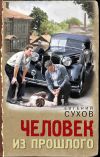Текст книги "The Great Boer War"

Автор книги: Arthur Conan Doyle
Жанр: Зарубежная публицистика, Публицистика
Возрастные ограничения: +12
сообщить о неприемлемом содержимом
Текущая страница: 32 (всего у книги 43 страниц)
This excellent little action showed that the British mounted infantry had reached a point of efficiency at which they were quite able to match the Boers at their own game. For hours they held them with an inferior force, and finally, when the numbers became equal, were able to drive them off and capture their guns. The credit is largely due to Major Lean for his prompt initiative on discovering their laager, and to Major Taylor for his handling of the force during a very critical time. Above all, it was due to the dead leader, Le Gallais, who had infected every man under him with his own spirit of reckless daring. 'If I die, tell my mother that I die happy, as we got the guns,' said he, with his failing breath. The British total losses were twelve killed (four officers) and thirty-three wounded (seven officers). Major Welch, a soldier of great promise, much beloved by his men, was one of the slain. Following closely after the repulse at Frederickstad this action was a heavy blow to De Wet. At last, the British were beginning to take something off the score which they owed the bold raider, but there was to be many an item on either side before the long reckoning should be closed. The Boers, with De Wet, fled south, where it was not long before they showed that they were still a military force with which we had to reckon.
In defiance of chronology it may perhaps make a clearer narrative if I continue at once with the movements of De Wet from the time that he lost his guns at Bothaville, and then come back to the consideration of the campaign in the Transvaal, and to a short account of those scattered and disconnected actions which break the continuity of the story. Before following De Wet, however, it is necessary to say something of the general state of the Orange River Colony and of some military developments which had occurred there. Under the wise and conciliatory rule of General Pretyman the farmers in the south and west were settling down, and for the time it looked as if a large district was finally pacified. The mild taxation was cheerfully paid, schools were reopened, and a peace party made itself apparent, with Fraser and Piet de Wet, the brother of Christian, among its strongest advocates.
Apart from the operations of De Wet there appeared to be no large force in the field in the Orange River Colony, but early in October of 1900 a small but very mobile and efficient Boer force skirted the eastern outposts of the British, struck the southern line of communications, and then came up the western flank, attacking, where an attack was possible, each of the isolated and weakly garrisoned townlets to which it came, and recruiting its strength from a district which had been hardly touched by the ravages of war, and which by its prosperity alone might have proved the amenity of British military rule. This force seems to have skirted Wepener without attacking a place of such evil omen to their cause. Their subsequent movements are readily traced by a sequence of military events.
On October 1st Rouxville was threatened. On the 9th an outpost of the Cheshire Militia was taken and the railway cut for a few hours in the neighbourhood of Bethulie. A week later the Boer riders were dotting the country round Phillipolis, Springfontein and Jagersfontein, the latter town being occupied upon October 16th, while the garrison held out upon the nearest kopje. The town was retaken from the enemy by King Hall and his men, who were Seaforth Highlanders and police. There was fierce fighting in the streets, and from twenty to thirty of each side were killed or wounded. Fauresmith was attacked on October 19th, but was also in the very safe hands of the Seaforths, who held it against a severe assault. Phillipolis was continually attacked between the 18th and the 24th, but made a most notable defence, which was conducted by Gostling, the resident magistrate, with forty civilians. For a week this band of stalwarts held their own against 600 Boers, and were finally relieved by a force from the railway. All the operations were not, however, as successful as these three defences. On October 24th a party of cavalry details belonging to many regiments were snapped up in an ambuscade. On the next day Jacobsdal was attacked, with considerable loss to the British. The place was entered in the night, and the enemy occupied the houses which surrounded the square. The garrison, consisting of about sixty men of the Capetown Highlanders, had encamped in the square, and were helpless when fire was opened upon them in the morning. There was practically no resistance, and yet for hours a murderous fire was kept up upon the tents in which they cowered, so that the affair seems not to have been far removed from murder. Two-thirds of the little force were killed or wounded. The number of the assailants does not appear to have been great, and they vanished upon the appearance of a relieving force from Modder River.
After the disaster at Jacobsdal the enemy appeared on November 1st near Kimberley and captured a small convoy. The country round was disturbed, and Settle was sent south with a column to pacify it. In this way we can trace this small cyclone from its origin in the old storm centre in the north-east of the Orange River Colony, sweeping round the whole country, striking one post after another, and finally blowing out at the corresponding point upon the other side of the seat of war.
We have last seen De Wet upon November 6th, when he fled south from Bothaville, leaving his guns but not his courage behind him. Trekking across the line, and for a wonder gathering up no train as he passed, he made for that part of the eastern Orange River Colony which had been reoccupied by his countrymen. Here, in the neighbourhood of Thabanchu, he was able to join other forces, probably the commandos of Haasbroek and Fourie, which still retained some guns. At the head of a considerable force he attacked the British garrison of Dewetsdorp, a town some forty miles to the south-east of Bloemfontein.
It was on November 18th that De Wet assailed the place, and it fell upon the 24th, after a defence which appears to have been a very creditable one. Several small British columns were moving in the south-east of the Colony, but none of them arrived in time to avert the disaster, which is the more inexplicable as the town is within one day's ride of Bloemfontein. The place is a village hemmed in upon its western side by a semicircle of steep rocky hills broken in the centre by a gully. The position was a very extended one, and had the fatal weakness that the loss of any portion of it meant the loss of it all. The garrison consisted of one company of Highland Light Infantry on the southern horn of the semicircle, three companies of the 2nd Gloucester Regiment on the northern and central part, with two guns of the 68th battery. Some of the Royal Irish Mounted Infantry and a handful of police made up the total of the defenders to something over four hundred, Major Massy in command.
The attack developed at that end of the ridge which was held by the company of Highlanders. Every night the Boer riflemen drew in closer, and every morning found the position more desperate. On the 20th the water supply of the garrison was cut, though a little was still brought up by volunteers during the night. The thirst in the sultry trenches was terrible, but the garrison still, with black lips and parched tongues, held on to their lines. On the 22nd the attack had made such progress that the post had by the Highlanders became untenable, and had to be withdrawn. It was occupied next morning by the Boers, and the whole ridge was at their mercy. Out of eighteen men who served one of the British guns sixteen were killed or wounded, and the last rounds were fired by the sergeant-farrier, who carried, loaded, and fired all by himself. All day the soldiers held out, but the thirst was in itself enough to justify if not to compel a surrender. At half-past five the garrison laid down their arms, having lost about sixty killed or wounded. There does not, as far as one can learn, seem to have been any attempt to injure the two guns which fell into the hands of the enemy. De Wet himself was one of the first to ride into the British trenches, and the prisoners gazed with interest at the short strong figure, with the dark tail coat and the square-topped bowler hat, of the most famous of the Boer leaders.
British columns were converging, however, from several quarters, and De Wet had to be at once on the move. On the 26th Dewetsdorp was reoccupied by General Charles Knox with fifteen hundred men. De Wet had two days' start, but so swift was Knox that on the 27th he had run him down at Vaalbank, where he shelled his camp. De Wet broke away, however, and trekking south for eighteen hours without a halt, shook off the pursuit. He had with him at this time nearly 8000 men with several guns under Haasbroek, Fourie, Philip Botha, and Steyn. It was his declared intention to invade Cape Colony with his train of weary footsore prisoners, and the laurels of Dewetsdorp still green upon him. He was much aided in all his plans by that mistaken leniency which had refused to recognise that a horse is in that country as much a weapon as a rifle, and had left great numbers upon the farms with which he could replace his useless animals. So numerous were they that many of the Boers had two or three for their own use. It is not too much to say that our weak treatment of the question of horses will come to be recognised as the one great blot upon the conduct of the war, and that our undue and fantastic scruples have prolonged hostilities for months, and cost the country many lives and many millions of pounds.
De Wet's plan for the invasion of the Colony was not yet destined to be realised, for a tenacious man had set himself to frustrate it. Several small but mobile British columns, those of Pilcher, of Barker, and of Herbert, under the supreme direction of Charles Knox, were working desperately to head him off. In torrents of rain which turned every spruit into a river and every road into a quagmire, the British horsemen stuck manfully to their work. De Wet had hurried south, crossed the Caledon River, and made for Odendaal's Drift. But Knox, after the skirmish at Vaalbank, had trekked swiftly south to Bethulie, and was now ready with three mobile columns and a network of scouts and patrols to strike in any direction. For a few days he had lost touch, but his arrangements were such that he must recover it if the Boers either crossed the railroad or approached the river. On December 2nd he had authentic information that De Wet was crossing the Caledon, and in an instant the British columns were all off at full cry once more, sweeping over the country with a front of fifteen miles. On the 3rd and 4th, in spite of frightful weather, the two little armies of horsemen struggled on, fetlock-deep in mud, with the rain lashing their faces. At night without cover, drenched and bitterly cold, the troopers threw themselves down on the sodden veld to snatch a few hours' sleep before renewing the interminable pursuit. The drift over the Caledon flowed deep and strong, but the Boer had passed and the Briton must pass also. Thirty guns took to the water, diving completely under the coffee-coloured surface, to reappear glistening upon the southern bank. Everywhere there were signs of the passage of the enemy. A litter of crippled or dying horses marked their track, and a Krupp gun was found abandoned by the drift. The Dewetsdorp prisoners, too, had been set loose, and began to stumble and stagger back to their countrymen, their boots worn off, and their putties wrapped round their bleeding feet. It is painful to add that they had been treated with a personal violence and a brutality in marked contrast to the elaborate hospitality shown by the British Government to its involuntary guests.
On December 6th De Wet had at last reached the Orange River a clear day in front of his pursuers. But it was only to find that his labours had been in vain. At Odendaal, where he had hoped to cross, the river was in spate, the British flag waved from a post upon the further side, and a strong force of expectant Guardsmen eagerly awaited him there. Instantly recognising that the game was up, the Boer leader doubled back for the north and safety. At Rouxville he hesitated as to whether he should snap up the small garrison, but the commandant, Rundle, showed a bold face, and De Wet passed on to the Coomassie Bridge over the Caledon. The small post there refused to be bluffed into a surrender, and the Boers, still dropping their horses fast, passed on, and got over the drift at Amsterdam, their rearguard being hardly across before Knox had also reached the river.
On the 10th the British were in touch again near Helvetia, where there was a rearguard skirmish. On the 11th both parties rode through Reddersberg, a few hours separating them. The Boers in their cross-country trekking go, as one of their prisoners observed, 'slap-bang at everything,' and as they are past-masters in the art of ox and mule driving, and have such a knowledge of the country that they can trek as well by night as by day, it says much for the energy of Knox and his men that he was able for a fortnight to keep in close touch with them.
It became evident now that there was not much chance of overtaking the main body of the burghers, and an attempt was therefore made to interpose a fresh force who might head them off. A line of posts existed between Thabanchu and Ladybrand, and Colonel Thorneycroft was stationed there with a movable column. It was Knox's plan therefore to prevent the Boers from breaking to the west and to head them towards the Basuto border. A small column under Parsons had been sent by Hunter from Bloemfontein, and pushed in upon the flank of De Wet, who had on the 12th got back to Dewetsdorp. Again the pursuit became warm, but De Wet's time was not yet come. He headed for Springhaan Nek, about fifteen miles east of Thabanchu. This pass is about four miles broad, with a British fort upon either side of it. There was only one way to safety, for Knox's mounted infantrymen and lancers were already dotting the southern skyline. Without hesitation the whole Boer force, now some 2500 strong, galloped at full speed in open order through the Nek, braving the long range fire of riflemen and guns. The tactics were those of French in his ride to Kimberley, and the success was as complete. De Wet's force passed through the last barrier which had been held against him, and vanished into the mountainous country round Ficksburg, where it could safely rest and refit.
The result then of these bustling operations had been that De Wet and his force survived, but that he had failed in his purpose of invading the Colony, and had dropped some five hundred horses, two guns, and about a hundred of his men. Haasbroek's commando had been detached by De Wet to make a feint at another pass while he made his way through the Springhaan. Parsons's force followed Haasbroek up and engaged him, but under cover of night he was able to get away and to join his leader to the north of Thabanchu. On December 13th, this, the second great chase after De Wet, may be said to have closed.
Chapter 31. The guerilla warfare in the transvaal: Nooitgedacht
Leaving De Wet in the Ficksburg mountains, where he lurked until after the opening of the New Year, the story of the scattered operations in the Transvaal may now be carried down to the same point – a story comprising many skirmishes and one considerable engagement, but so devoid of any central thread that it is difficult to know how to approach it. From Lichtenburg to Komati, a distance of four hundred miles, there was sporadic warfare everywhere, attacks upon scattered posts, usually beaten off but occasionally successful, attacks upon convoys, attacks upon railway trains, attacks upon anything and everything which could harass the invaders. Each General in his own district had his own work of repression to perform, and so we had best trace the doings of each up to the end of the year 1900.
Lord Methuen after his pursuit of De Wet in August had gone to Mafeking to refit. From that point, with a force which contained a large proportion of yeomanry and of Australian bushmen, he conducted a long series of operations in the difficult and important district which lies between Rustenburg, Lichtenburg, and Zeerust. Several strong and mobile Boer commandos with guns moved about in it, and an energetic though not very deadly warfare raged between Lemmer, Snyman, and De la Rey on the one side, and the troops of Methuen, Douglas, Broadwood, and Lord Errol upon the other. Methuen moved about incessantly through the broken country, winning small skirmishes and suffering the indignity of continual sniping. From time to time he captured stores, wagons, and small bodies of prisoners. Early in October he and Douglas had successes. On the 15th Broadwood was engaged. On the 20th there was a convoy action. On the 25th Methuen had a success and twenty-eight prisoners. On November 9th he surprised Snyman and took thirty prisoners. On the 10th he got a pom-pom. Early in this month Douglas separated from Methuen, and marched south from Zeerust through Ventersdorp to Klerksdorp, passing over a country which had been hardly touched before, and arriving at his goal with much cattle and some prisoners. Towards the end of the month a considerable stock of provisions were conveyed to Zeerust, and a garrison left to hold that town so as to release Methuen's column for service elsewhere.
Hart's sphere of action was originally round Potchefstroom. On September 9th he made a fine forced march to surprise this town, which had been left some time before with an entirely inadequate garrison to fall into the hands of the enemy. His infantry covered thirty-six and his cavalry fifty-four miles in fifteen hours. The operation was a complete success, the town with eighty Boers falling into his hands with little opposition. On September 30th Hart returned to Krugersdorp, where, save for one skirmish upon the Gatsrand on November 22nd, he appears to have had no actual fighting to do during the remainder of the year.
After the clearing of the eastern border of the Transvaal by the movement of Pole-Carew along the railway line, and of Buller aided by Ian Hamilton in the mountainous country to the north of it, there were no operations of importance in this district. A guard was kept upon the frontier to prevent the return of refugees and the smuggling of ammunition, while General Kitchener, the brother of the Sirdar, broke up a few small Boer laagers in the neighbourhood of Lydenburg. Smith-Dorrien guarded the line at Belfast, and on two occasions, November 1st and November 6th, he made aggressive movements against the enemy. The first, which was a surprise executed in concert with Colonel Spens of the Shropshires, was frustrated by a severe blizzard, which prevented the troops from pushing home their success. The second was a two days' expedition, which met with a spirited opposition, and demands a fuller notice.
This was made from Belfast, and the force, which consisted of about fourteen hundred men, advanced south to the Komati River. The infantry were Suffolks and Shropshires, the cavalry Canadians and 5th Lancers, with two Canadian guns and four of the 84th battery. All day the Boer snipers clung to the column, as they had done to French's cavalry in the same district. Mere route marches without a very definite and adequate objective appear to be rather exasperating than overawing, for so long as the column is moving onwards the most timid farmer may be tempted into long-range fire from the flanks or rear. The river was reached and the Boers driven from a position which they had taken up, but their signal fires brought mounted riflemen from every farm, and the retreat of the troops was pressed as they returned to Belfast. There was all the material for a South African Lexington. The most difficult of military operations, the covering of a detachment from a numerous and aggressive enemy, was admirably carried out by the Canadian gunners and dragoons under the command of Colonel Lessard. So severe was the pressure that sixteen of the latter were for a time in the hands of the enemy, who attempted something in the nature of a charge upon the steadfast rearguard. The movement was repulsed, and the total Boer loss would appear to have been considerable, since two of their leaders, Commandant Henry Prinsloo and General Joachim Fourie, were killed, while General Johann Grobler was wounded. If the rank and file suffered in proportion the losses must have been severe. The British casualties in the two days amounted to eight killed and thirty wounded, a small total when the arduous nature of the service is considered. The Canadians and the Shropshires seem to have borne off the honours of these trying operations.
In the second week of October, General French, with three brigades of cavalry (Dickson's, Gordon's, and Mahon's), started for a cross-country ride from Machadodorp. Three brigades may seem an imposing force, but the actual numbers did not exceed two strong regiments, or about 1500 sabres in all. A wing of the Suffolk Regiment went with them. On October 13th Mahon's brigade met with a sharp resistance, and lost ten killed and twenty-nine wounded. On the 14th the force entered Carolina. On the 16th they lost six killed and twenty wounded, and from the day that they started until they reached Heidelberg on the 27th there was never a day that they could shake themselves clear of their attendant snipers. The total losses of the force were about ninety killed and wounded, but they brought in sixty prisoners and a large quantity of cattle and stores. The march had at least the effect of making it clear that the passage of a column of troops encumbered with baggage through a hostile country is an inefficient means for quelling a popular resistance. Light and mobile parties acting from a central depot were in future to be employed, with greater hopes of success.
Some appreciable proportion of the British losses during this phase of the war arose from railway accidents caused by the persistent tampering with the lines. In the first ten days of October there were four such mishaps, in which two Sappers, twenty-three of the Guards (Coldstreams), and eighteen of the 66th battery were killed or wounded. On the last occasion, which occurred on October 10th near Vlakfontein, the reinforcements who came to aid the sufferers were themselves waylaid, and lost twenty, mostly of the Rifle Brigade, killed, wounded, or prisoners. Hardly a day elapsed that the line was not cut at some point. The bringing of supplies was complicated by the fact that the Boer women and children were coming more and more into refugee camps, where they had to be fed by the British, and the strange spectacle was frequently seen of Boer snipers killing or wounding the drivers and stokers of the very trains which were bringing up food upon which Boer families were dependent for their lives. Considering that these tactics were continued for over a year, and that they resulted in the death or mutilation of many hundreds of British officers and men, it is really inexplicable that the British authorities did not employ the means used by all armies under such circumstances – which is to place hostages upon the trains. A truckload of Boers behind every engine would have stopped the practice for ever. Again and again in this war the British have fought with the gloves when their opponents used their knuckles.
We will pass now to a consideration of the doings of General Paget, who was operating to the north and north-east of Pretoria with a force which consisted of two regiments of infantry, about a thousand horsemen, and twelve guns. His mounted men were under the command of Plumer. In the early part of November this force had been withdrawn from Warm Baths and had fallen back upon Pienaar's River, where it had continual skirmishes with the enemy. Towards the end of November, news having reached Pretoria that the enemy under Erasmus and Viljoen were present in force at a place called Rhenoster Kop, which is about twenty miles north of the Delagoa Railway line and fifty miles north-east of the capital, it was arranged that Paget should attack them from the south, while Lyttelton from Middelburg should endeavour to get behind them. The force with which Paget started upon this enterprise was not a very formidable one. He had for mounted troops some Queensland, South Australian, New Zealand, and Tasmanian Bushmen, together with the York, Montgomery, and Warwick Yeomanry. His infantry were the 1st West Riding regiment and four companies of the Munsters. His guns were the 7th and 38th batteries, with two naval quick-firing twelve-pounders and some smaller pieces. The total could not have exceeded some two thousand men. Here, as at other times, it is noticeable that in spite of the two hundred thousand soldiers whom the British kept in the field, the lines of communication absorbed so many that at the actual point of contact they were seldom superior and often inferior in numbers to the enemy. The opening of the Natal and Delagoa lines though valuable in many ways, had been an additional drain. Where every culvert needs its picket and every bridge its company, the guardianship of many hundreds of miles of rail is no light matter.
In the early morning of November 29th Paget's men came in contact with the enemy, who were in some force upon an admirable position. A ridge for their centre, a flanking kopje for their cross fire, and a grass glacis for the approach – it was an ideal Boer battlefield. The colonials and the yeomanry under Plumer on the left, and Hickman on the right, pushed in upon them, until it was evident that they meant to hold their ground. Their advance being checked by a very severe fire, the horsemen dismounted and took such cover as they could. Paget's original idea had been a turning movement, but the Boers were the more numerous body, and it was impossible for the smaller British force to find their flanks, for they extended over at least seven miles. The infantry were moved up into the centre, therefore, between the wings of dismounted horsemen, and the guns were brought up to cover the advance. The country was ill-suited, however, to the use of artillery, and it was only possible to use an indirect fire from under a curve of the grass land. The guns made good practice, however, one section of the 38th battery being in action all day within 800 yards of the Boer line, and putting themselves out of action after 300 rounds by the destruction of their own rifling. Once over the curve every yard of the veld was commanded by the hidden riflemen. The infantry advanced, but could make no headway against the deadly fire which met them. By short rushes the attack managed to get within 300 yards of the enemy, and there it stuck. On the right the Munsters carried a detached kopje which was in front of them, but could do little to aid the main attack. Nothing could have exceeded the tenacity of the Yorkshiremen and the New Zealanders, who were immediately to their left. Though unable to advance they refused to retire, and indeed they were in a position from which a retirement would have been a serious operation. Colonel Lloyd of the West Ridings was hit in three places and killed. Five out of six officers of the New Zealand corps were struck down. There were no reserves to give a fresh impetus to the attack, and the thin scattered line, behind bullet-spotted stones or anthills, could but hold its own while the sun sank slowly upon a day which will not be forgotten by those who endured it. The Boers were reinforced in the afternoon, and the pressure became so severe that the field guns were retired with much difficulty. Many of the infantry had shot away all their cartridges and were helpless. Just one year before British soldiers had lain under similar circumstances on the plain which leads to Modder River, and now on a smaller scale the very same drama was being enacted. Gradually the violet haze of evening deepened into darkness, and the incessant rattle of the rifle fire died away on either side. Again, as at Modder River, the British infantry still lay in their position, determined to take no backward step, and again the Boers stole away in the night, leaving the ridge which they had defended so well. A hundred killed and wounded was the price paid by the British for that line of rock studded hills – a heavier proportion of losses than had befallen Lord Methuen in the corresponding action. Of the Boer losses there was as usual no means of judging, but several grave-mounds, newly dug, showed that they also had something to deplore. Their retreat, however, was not due to exhaustion, but to the demonstration which Lyttelton had been able to make in their rear. The gunners and the infantry had all done well in a most trying action, but by common consent it was with the men from New Zealand that the honours lay. It was no empty compliment when Sir Alfred Milner telegraphed to the Premier of New Zealand his congratulations upon the distinguished behaviour of his fellow countrymen.
From this time onwards there was nothing of importance in this part of the seat of war.
It is necessary now to turn from the north-east to the north-west of Pretoria, where the presence of De la Rey and the cover afforded by the Magaliesberg mountains had kept alive the Boer resistance. Very rugged lines of hill, alternating with fertile valleys, afforded a succession of forts and of granaries to the army which held them. To General Clements' column had been committed the task of clearing this difficult piece of country. His force fluctuated in numbers, but does not appear at any time to have consisted of more than three thousand men, which comprised the Border Regiment, the Yorkshire Light Infantry, the second Northumberland Fusiliers, mounted infantry, yeomanry, the 8th R.F.A., P battery R.H.A., and one heavy gun. With this small army he moved about the district, breaking up Boer bands, capturing supplies, and bringing in refugees. On November 13th he was at Krugersdorp, the southern extremity of his beat. On the 24th he was moving north again, and found himself as he approached the hills in the presence of a force of Boers with cannon. This was the redoubtable De la Rey, who sometimes operated in Methuen's country to the north of the Magaliesberg, and sometimes to the south. He had now apparently fixed upon Clements as his definite opponent. De la Rey was numerically inferior, and Clements had no difficulty in this first encounter in forcing him back with some loss. On November 26th Clements was back at Krugersdorp again with cattle and prisoners. In the early days of December he was moving northwards once more, where a serious disaster awaited him. Before narrating the circumstances connected with the Battle of Nooitgedacht there is one incident which occurred in this same region which should be recounted.
Правообладателям!
Это произведение, предположительно, находится в статусе 'public domain'. Если это не так и размещение материала нарушает чьи-либо права, то сообщите нам об этом.








































